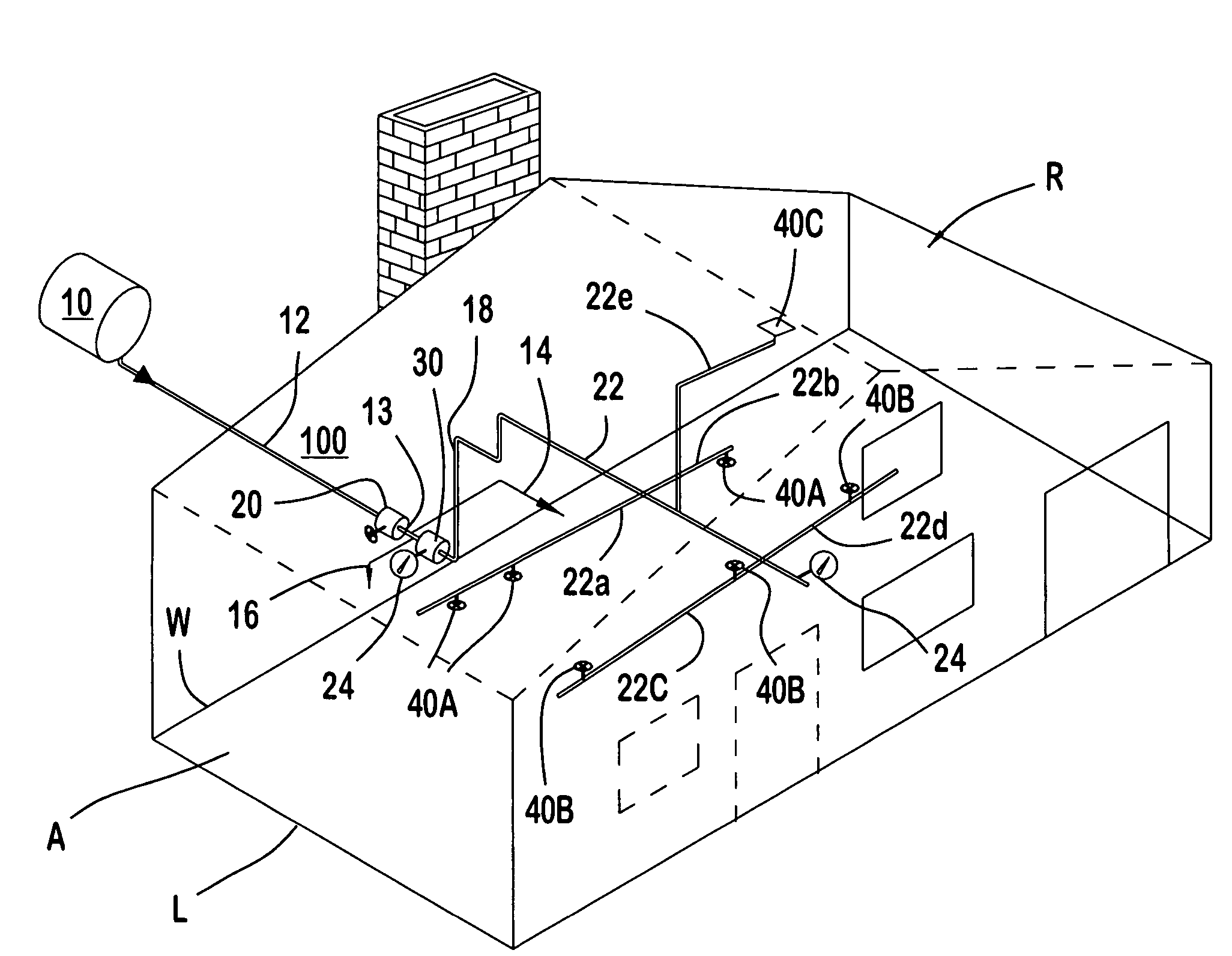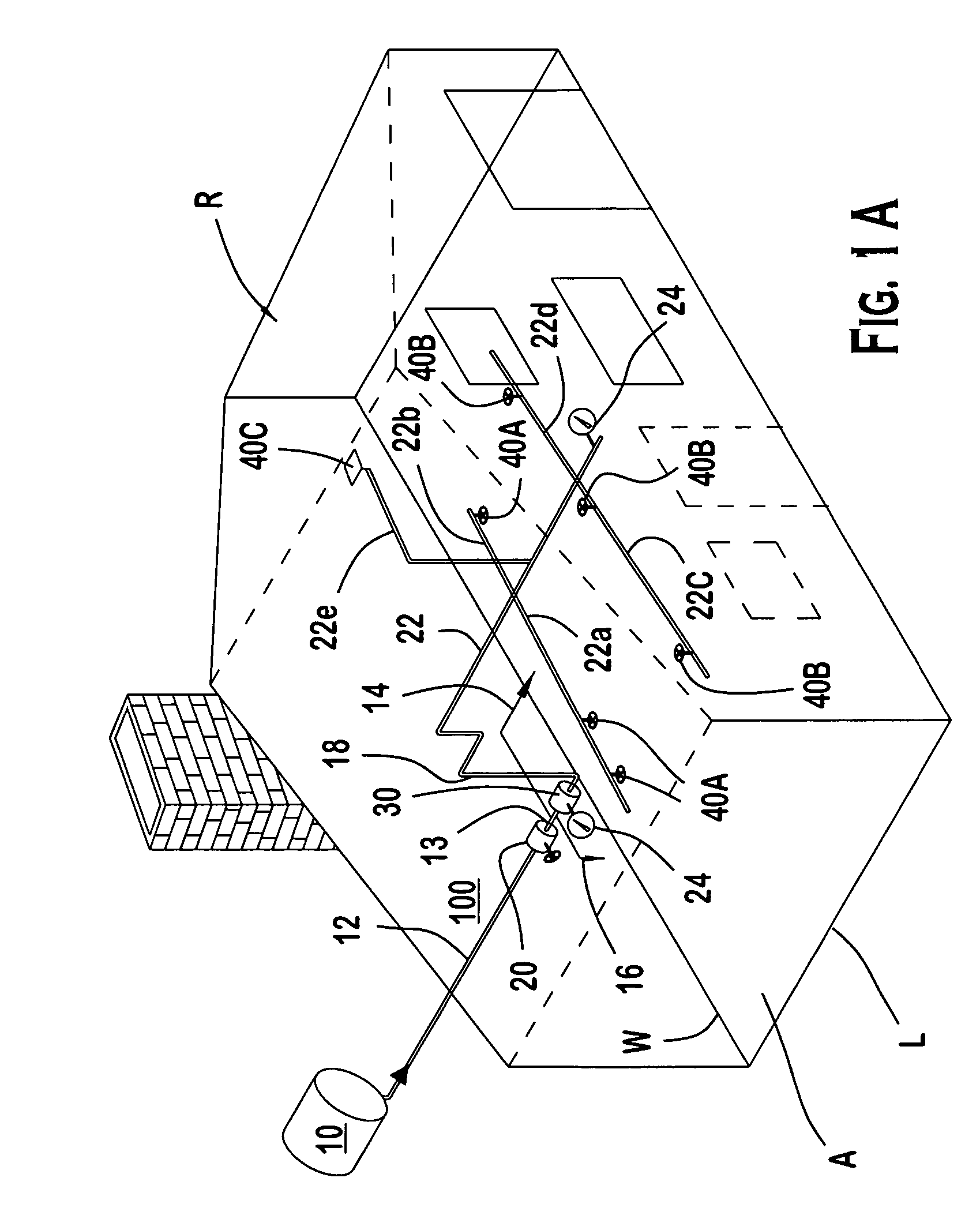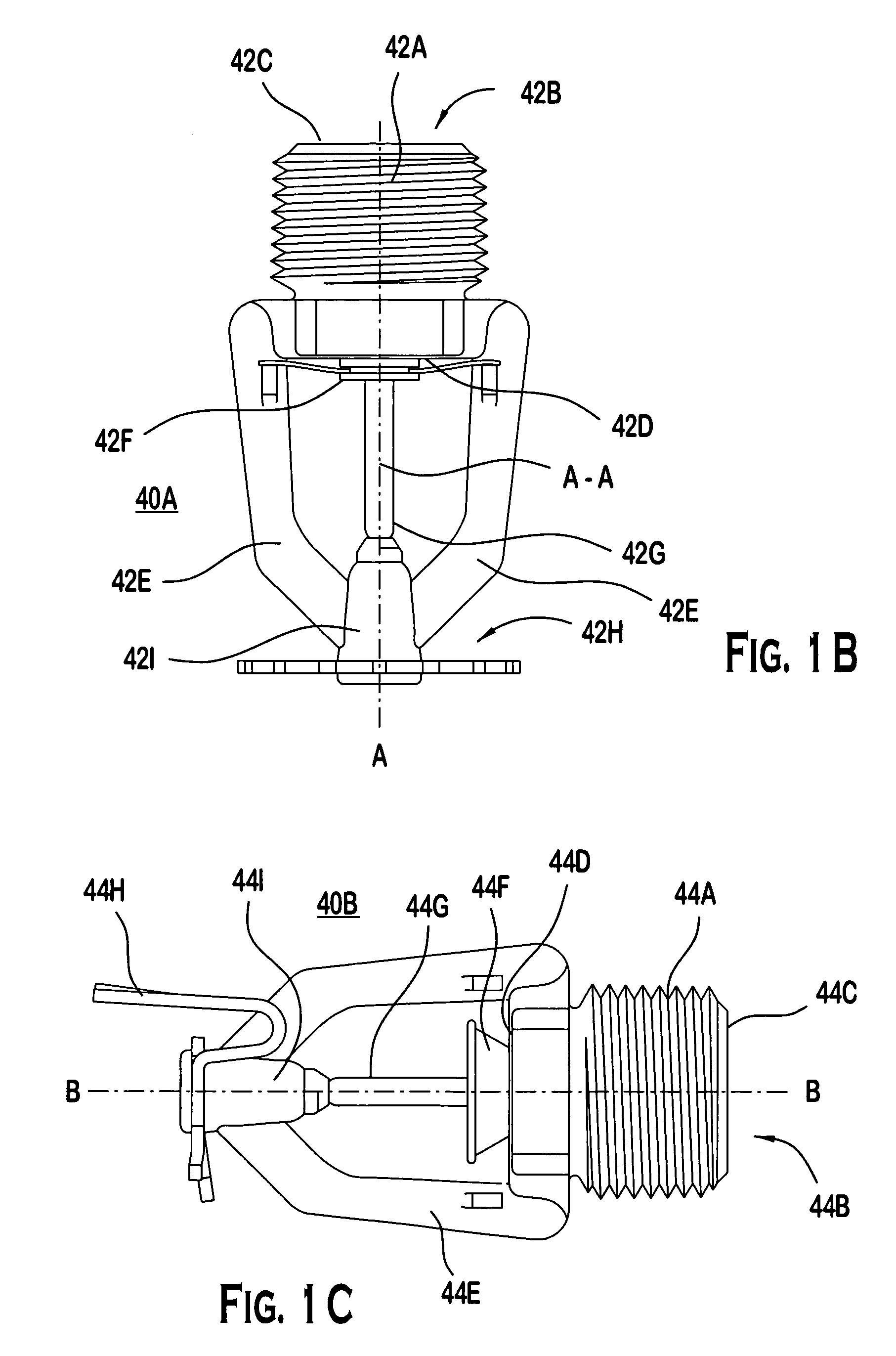Residential dry sprinkler design method and system
a technology of dry sprinklers and design methods, applied in the direction of movable spraying equipment, medical science, dental surgery, etc., can solve the problems of failure of such systems, increased occupancy hazards beyond initial system capability, and slower response time of dry sprinkler systems to fire conditions
- Summary
- Abstract
- Description
- Claims
- Application Information
AI Technical Summary
Benefits of technology
Problems solved by technology
Method used
Image
Examples
Embodiment Construction
[0022]FIGS. 1-2 illustrate the preferred embodiments. In particular FIG. 1A shows a residential dwelling unit R. As used herein, the term “residential” is a “dwelling unit” as defined in NFPA Standard 13D, 13R (2002), which can include commercial dwelling units (e.g., rental apartments, lodging and rooming houses, board and care facilities, hospitals, motels or hotels) to indicate one or more rooms, arranged for the use of individuals living together, as in a single housekeeping unit, that normally have cooking, living, sanitary, and sleeping facilities. The residential dwelling unit normally includes a plurality of compartments as defined in NFPA Standards 13, 13D, and 13R, where generally each compartment is a space that is enclosed by walls and ceiling. The standards relating to residential fire protection, including 2002 Standards 13, 13D, and 13R, as promulgated by the National Fire Protection Association (“NFPA Standard 13 (2002)”, “NFPA Standard 13D (2002)”, “NFPA Standard 13...
PUM
 Login to View More
Login to View More Abstract
Description
Claims
Application Information
 Login to View More
Login to View More - R&D
- Intellectual Property
- Life Sciences
- Materials
- Tech Scout
- Unparalleled Data Quality
- Higher Quality Content
- 60% Fewer Hallucinations
Browse by: Latest US Patents, China's latest patents, Technical Efficacy Thesaurus, Application Domain, Technology Topic, Popular Technical Reports.
© 2025 PatSnap. All rights reserved.Legal|Privacy policy|Modern Slavery Act Transparency Statement|Sitemap|About US| Contact US: help@patsnap.com



